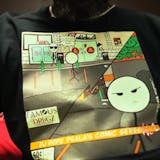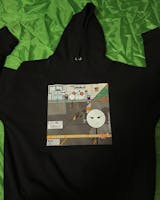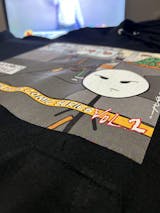In recent years, DTF printing has become a frequently preferred printing system in the printed clothing industry due to its versatility and low cost. DTF, known as direct to film technology, continues to develop rapidly. DTF printing has also begun to attract attention in the textile printing industry.
Unlike traditional printing, DTF transfer works with the direct to film method. DTF (Direct-to-Film) printing system has revolutionized many sectors, especially the textile industry. The unique advantages offered by DTF, along with direct to film printing techniques, have made this printing system a popular choice in the industry. The flexibility, color richness and cost effectiveness offered by DTF indicate that this technology will spread to a wider area in the future.
DTF Technology Features
- Technological Developments: Printers and materials used in the custom DTF printing system are developing rapidly. Printheads are becoming faster, more precise and more durable. These developments increase the attractiveness of DTF by increasing production speed and improving quality. At the same time, new inks and film materials improve print quality by providing a wider color gamut and better adhesion.
- Expansion of Application Areas: Although the DTF printing system was initially popular in the textile industry, it began to be used in different areas over time. Fields such as advertising, promotional products, automotive, fashion and art benefit from the flexibility offered by DTF. DTF's ability to print on a wide variety of substrates makes it an attractive option for different industries.
- Sustainability and Environmentally Friendly Approaches: With increasing environmental awareness, sustainability has become an important factor in printing technologies. Making the materials used in the DTF printing system environmentally friendly will positively affect the future of this technology. The use of water based inks and reducing waste are important steps in reducing the environmental impact of a DTF printing system.
- Customization and Personalization Trend: Nowadays, consumers show great interest in customized and personalized products. The DTF printing system supports this trend with its ability to produce high-quality prints even in small quantities. The ability to quickly turn customers' unique designs into print will play a key role in DTF's future success.
- Cost Effectiveness and Accessibility: The cost effectiveness of the custom heat transfer system has enabled it to reach large audiences. Compared to traditional printing methods, DTF has lower initial costs and less complex production processes. This has led to DTF becoming attractive to both large scale and small scale businesses.
The DTF printing system will continue to grow in the future thanks to factors such as technological advances, expanding application areas, sustainability, customization and cost effectiveness. The flexibility and quality offered by DTF make it an indispensable tool for many industries. These strengths of DTF will take it to a leading position among printing technologies and open new horizons in the future.
What Will Be the Future of DTF Printing?
The future of the DTF printing system, which works with the heat press method, looks very bright. This technology, which is frequently used in the textile, accessory and decoration industries, has also begun to show itself in new industries. Thanks to this technology, which stands out with its fast production, bulk ordering, printing quality and many other features, it is not a distant possibility to see innovations in many more industries.
With the custom gang sheet feature, prints can be stored and kept ready for order at any time. In this way, both orders and mass production are carried out very quickly. DTF printing systems, whose usage area will expand in the future, are still among the most preferred printing systems in the world.








